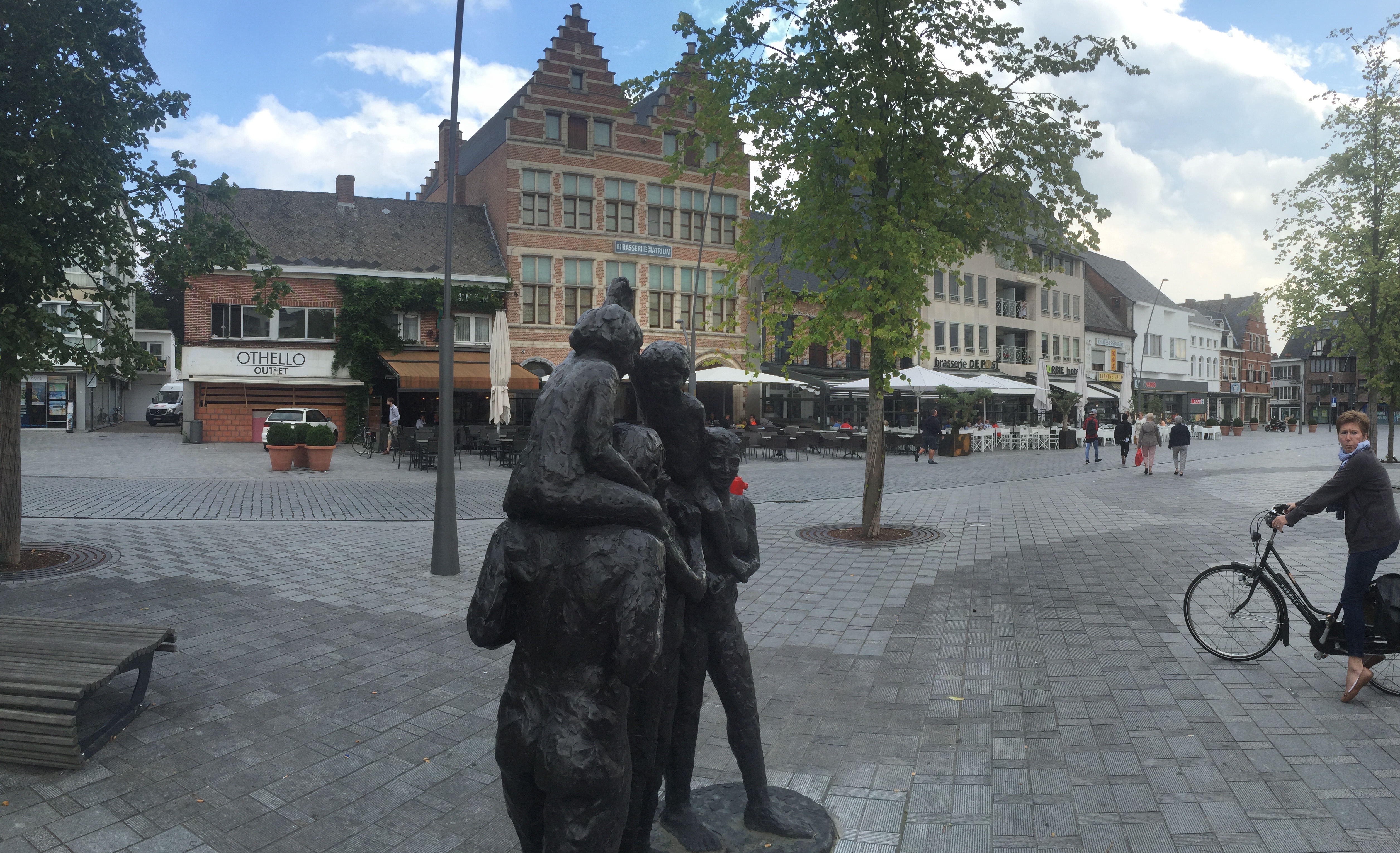Fascinating story from Aeon:
The Geel question
For centuries, a little Belgian town has treated the mentally ill. Why are its medieval methods so successful?

Half an hour on the slow train from Antwerp, surrounded by flat, sparsely populated farmlands, Geel (pronounced, roughly, ‘Hyale’) strikes the visitor as a quiet, tidy but otherwise unremarkable Belgian market town. Yet its story is unique. For more than 700 years its inhabitants have taken the mentally ill and disabled into their homes as guests or ‘boarders’. At times, these guests have numbered in the thousands, and arrived from all over Europe. There are several hundred in residence today, sharing their lives with their host families for years, decades or even a lifetime.
The origins of the Geel story lie in the 13th century, in the martyrdom of Saint Dymphna, a legendary seventh-century Irish princess whose pagan father went mad with grief after the death of his Christian wife and demanded that Dymphna marry him. To escape the king’s incestuous passion, Dymphna fled to Europe and holed up in the marshy flatlands of Flanders.
Today, the system continues along much the same lines. A boarder is treated as a member of the family: involved in everything, and particularly encouraged to form a strong bond with the children, a relationship that is seen as beneficial to both parties. The boarder’s conduct is expected to meet the same basic standards as everybody else’s, though it’s also understood that he or she might not have the same coping resources as others. Odd behaviour is ignored where possible, and when necessary dealt with discreetly.

The people of Geel don’t regard any of this as therapy: it’s simply ‘family care’. But throughout the town’s long history, many both inside and outside the psychiatric profession have wondered whether this is not only a form of therapy in itself, but perhaps the best form there is. However we might categorise or diagnose their conditions, and whatever we believe their cause to be — whether genetics or childhood trauma or brain chemistry or modern society — the ‘mentally ill’ are in practice those who have fallen through the net, who have broken the ties that bind the rest of us in our social contract, who are no longer able to connect. If these ties can be remade so that the individual is reintegrated with the collective, doesn’t ‘family care’ amount to therapy? Even, perhaps, the closest we can approach to an actual cure?
Nearly 50 years ago to the day, the Beatles released the single All You Need Is Love, maybe they were on to something.
-Tim Cocks


Really interesting and perhaps Gabor Mate herehttp://theunboundedspirit.com/myth-of-normal/
ideas on what is normal or not is worth linking this to . There are lots of things in the article which are interesting other than the Beatles . The no such thing as society and the obsession with individuality /atomisation and self responsibility is not just due to Norman Tebbit and Maggie T..it seems to be a modern issue throughout the world and perhaps one of the reasons for the growth in stress/mental health disorders . Maybe the social experiment of sharing and caring is really wired into us as social apes . One radical experiment along these lines was RD Laing and his anti psychiatry movement …some wild stuff went on there in London as described here ..https://www.theguardian.com/books/2012/sep/02/rd-laing-mental-health-sanity
Hi Ian
Thanks for stopping by and for the useful and relevant links. I agree that perhaps we need to step away from the helter skelter of modern life and come together so that we can work it out with a little help from our friends…. (sorry)
I’ve been battling with this long and complex paper for a while, but i feel that it is relevant here – https://npsa-association.org/events/dr-katerina-fotopoulou-mentalising-homeostasis-social-origins-interoception-emotion/
“we put forward the radical claim that even some of the most minimal aspects of selfhood, namely the feeling qualities associated with being an embodied subject, are fundamentally shaped by embodied interactions with other people in early infancy and beyond. Such embodied interactions allow the developing organism to mentalize its homeostatic regulation. In other words, embodied interactions contribute directly to the building of mental models of the infant’s physiological states, given the need to maintain such states within a given dynamic range despite internal or external perturbations…Collectively, such experiences of proximal intercorporeality “sculpt” the mentalization process and hence the constitution of the minimal self, including the progressive sophistication of mental distinctions between “subject-object,” “self-other” and even “pleasure-pain.” Finally, we explore notions of cardiac and more broadly interoceptive awareness as later, cognitive acquisitions that allow us to progressively solidify such distinctions, as well as understand and empathise with other people.”
It seems the profound importance of others, of society, from even the earliest days of life can not be overemphasised.
Thanks again
Tim